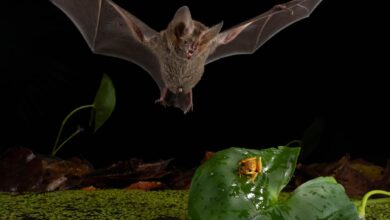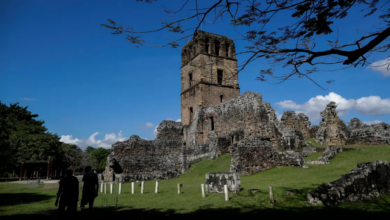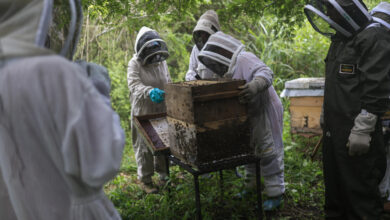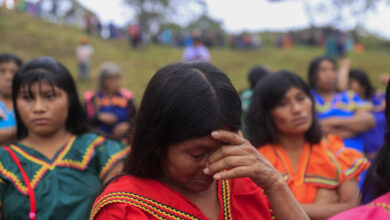Panama’s Old US Forts Spark an Artistic Protest Against Occupations
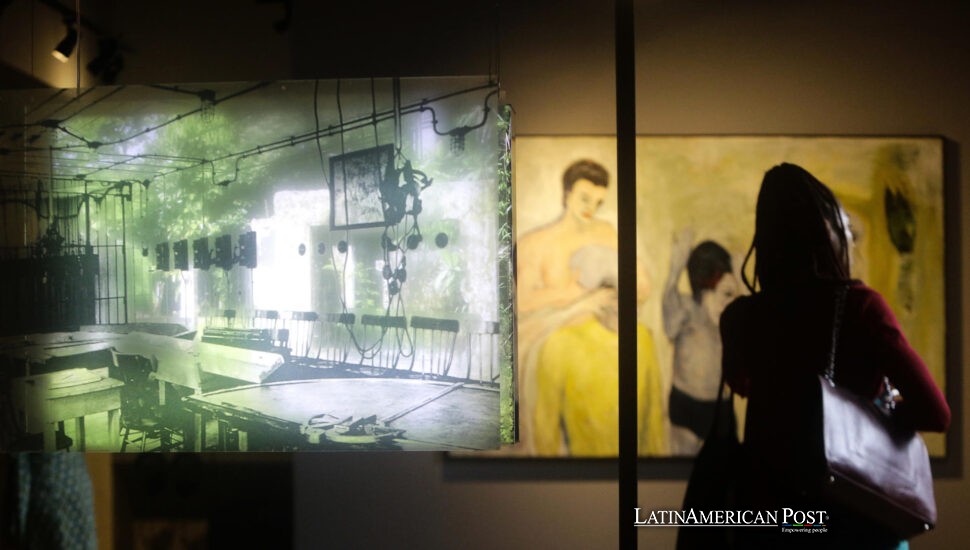
Panamanian artist Ana Elena Tejera breathes new life into relics of US military influence, weaving red thread and personal performance into centuries-old forts and bunkers. In this provocative project, she challenges renewed security deals that echo a complex, lingering history.
Fortresses Reimagined, Memories Reopened
The enormous stone bulwarks flanking Panama’s canal entrances once bristled with US artillery; now, they echo mostly with seabirds and the rustle of jungle vines. Into that silence walks Ana Elena Tejera, spool of crimson yarn in hand, determined to make the ruins speak again.
Her exhibition “1.432 km² de humillación: gestos contra el mal de ojo”—opening this week at the Museo del Canal—transforms half-forgotten coastal forts and the remains of the notorious School of the Americas into a vivid archive of gesture, color, and resistance. During a walk-through with EFE, Tejera points to a vintage aerial photo of Fort Amador: across the faded gray image runs a bright, zig-zag line of thread. “Every stitch is a reminder,” she says, “that occupation is never entirely in the past.”
The 1,432-square-kilometer Canal Zone ceded to US control in 1903, reverted to Panama only in 1999. Yet Tejera argues the psychological handover remains incomplete—especially after new bilateral security memoranda signaled last year that US troops could again train in areas such as Fort Sherman. “People thought the chapter was closed,” she tells EFE. “Then suddenly, the same place is back in the headlines. My work asks: what did we learn?”
She is an artist, archivist, and granddaughter of a Panamanian soldier who once drilled at those bases. That family thread knots personal history to national memory—and becomes a literal thread in her installations. She spent months combing national archives, recording oral histories, and mapping the old gun emplacements scattered along both oceans. Sometimes, she worked alone under tropical downpours; sometimes, she enlisted local fishermen to ferry her across shrunken channels as tides withdrew, exposing barnacled concrete that once supported heavy artillery.
Scarlet Lines of Resistance
Tejera’s material vocabulary is simple: red cotton, old photographs, and her body. Yet the effect is disarming. In one video loop projected inside the museum, she stands at the mouth of a derelict bunker, winding the yarn around her wrists, then across a corroded gun port, then back around her torso—an improvised cat’s cradle that leaves no clean exit. “It’s a ritual against the mal de ojo,” she explains, referring to the folk belief that envy or ill will can sap a person’s vigor. In her reading, the “evil eye” is structural power—the kind that claimed territory, dictated training manuals, and exported interrogation techniques across Latin America.
Visitors shuffle past hanging transparencies where archival images—graduating cadets at Fort Gulick, U.S. engineers surveying jungles—are sewn through with parallel scarlet tracks. The stitches recall navigational routes yet also suggest wounds sutured but unhealed. Throughout the gallery, lengths of yarn connect ceiling beams to the floor, forcing people to duck or alter course. “I want the body to feel the obstacle,” Tejera tells EFE. “We talk about history as ideas, but bodies lived it.”
Her residency coincided—serendipitously or prophetically—with the Panamanian government’s announcement that Fort Sherman might host joint counternarcotics operations. While officials emphasize the limited scope, the timing sharpened Tejera’s sense of urgency. She drove north to Sherman the same week, looping thread between palm trunks and derelict barracks until security guards asked her to leave. She left the yarn fluttering. “Art can’t stop policy,” she acknowledges, “but it can make silence impossible.”
Echoes of Occupation and the Fights Ahead
The Museo del Canal’s executive director, Ana Elizabeth González, says Tejera’s project fits the institution’s push to confront the canal’s layered legacy. “We host school visits every day,” González tells EFE. “Young Panamanians know the treaties but rarely visit the forts. Ana brings those spaces into town, into conversation.” She notes that the show mixes Tejera’s new media work with declassified maps and diplomatic cables, letting viewers trace how foreign strategy once mapped local geography.
Outside the museum walls, the debate over foreign security cooperation intensifies. Environmental groups question whether reopening Sherman could disrupt fragile Caribbean wetlands. Historians remind lawmakers that the School of the Americas—rebranded but alive in Georgia, USA—trained figures connected to coups from Chile to Honduras. For Tejera, the personal stakes are immediate: “My grandfather came home decorated,” she says, “but his generation also carried trauma. Repetition without reflection isn’t security; it’s amnesia.”
She hopes the exhibition sparks public forums, not just selfies with crimson installations. Workshops planned during the three-month run will invite ex-soldiers, local Kuna and Emberá community leaders, and high-school students to annotate large-scale maps with family memories of the Zone—good and evil. The museum has pledged to catalog these testimonies and store the maps alongside official documents, widening the record.
Away from gallery lights, Tejera continues to make films. Her 2020 documentary “Panquiaco,” Panama’s submission to the Goya Awards, traced an Indigenous fisherman’s migrant journey in reverse—from Europe back up the Río Sambú. Her next feature, co-produced with France and Chile, will explore how family archives become battlegrounds for collective identity. Shooting starts next spring, but she also jokes that the red thread may sneak onto that set.
Asked what comes after the exhibition closes, Tejera smiles and touches the spool hooked to her belt loop. “The forts aren’t going anywhere,” she says. “Neither is the conversation. I’ll keep tugging until the knots show.”
Also Read: Colombian Hummingbirds Dance as Misty Monserrate Unveils a Vibrant Haven
In the gallery’s final room, a spotlight illuminates a neatly coiled heap of scarlet yarn. Beside it, a plaque carries a simple invitation: Tire del hilo—pull the thread. One by one, visitors do, unraveling the coil a little farther, wondering what else might come loose if they keep pulling.

